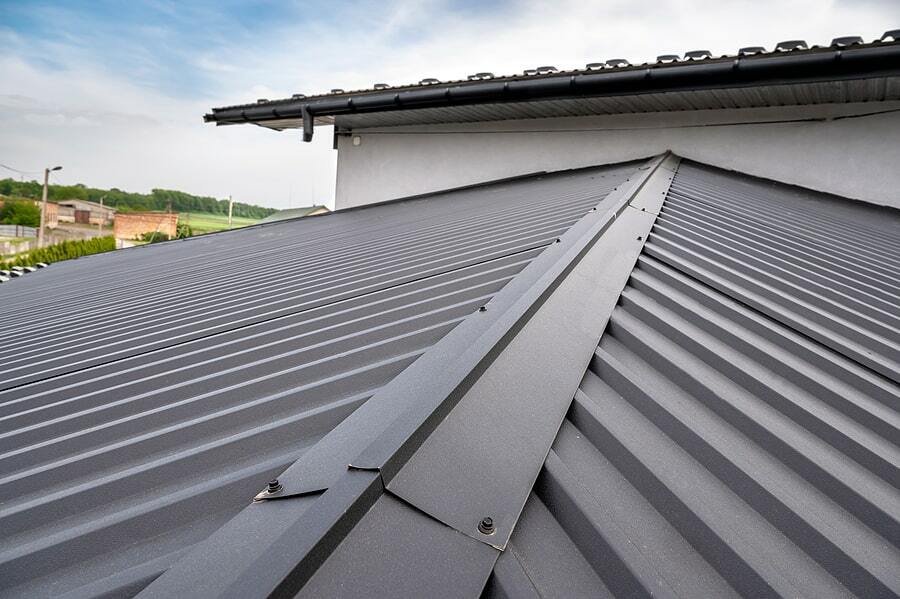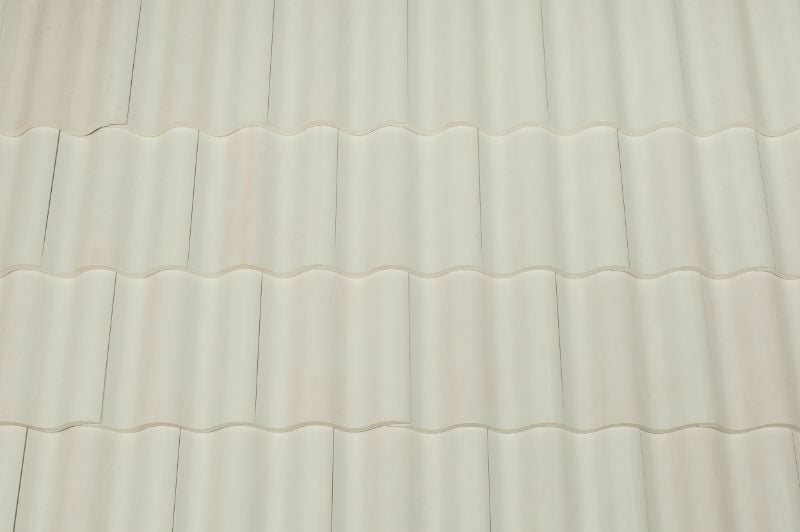Your shingle's color influences your home's energy efficiency. The central question is, "What color roof is the most energy-efficient?" Here's how to determine what roofing material might work best for your home, comfort, and wallet.
Black vs. White Roofs


We need a quick science lesson before delving into the energy efficiency of black versus white roofing materials. Heat and light are different types of energy. Light can become heat when an object absorbs it.
Black substances absorb all wavelengths of light before converting them into heat. The rapid absorption is what makes asphalt or blacktop hot in the summer. White substances reflect all wavelengths of light, so they do not go through dramatic temperature changes.
Light absorption is only half the battle. Black and white roofing materials also have different levels of heat retention. While both have nearly identical overnight temperature profiles, black shingles lose heat more rapidly than their white counterparts.
Note that black and white are the two extremes on the color spectrum. If you have a dark brown roof, expect it to absorb sunlight readily. If you have a light grey roof, it should maintain a consistent temperature profile. Choosing the right roof color for your home is ultimately your decision.
Are Metal Roofs Energy Efficient?

Metal roofs are the exception to the rule. The highly reflective surface allows it to reflect solar radiation away from your home. Experts estimate that metallic shingles or panels can reduce cooling costs between 10% and 25%. Metal roofs excel in three key areas: emissivity, reflectivity, and thermal resistance. Emissivity measures a roof’s ability to radiate sunlight away from your home. Some manufacturers offer stone-coated metal roofs that re-emit up to 90% of solar radiation. Reflectivity gauges how much sunshine the roof absorbs. Low solar reflectivity can heat your roof's surface to 160 degrees. Metal mitigates heat absorption because it naturally dissipates heat. Thermal resistance determines how well roofing material can resist heat flow. A study from R&D Engineering found that some metal can improve your roof’s thermal performance by 218%. Note that researchers used conventional asphalt shingles as a baseline for the trial.
So What is The Most Energy Efficient Roof Material and Color?
Composite Roofs

are also referred to as "Cool Roofs." Cool roofs can save property owners years of energy expenses and maintenance problems. Brava composite roof tile actually can help reflect heat and sunlight away from your home. By installing a cool roof, you can expect the temperature of your roof to be reduced. This results in lower attic temperatures and lower electric bills. Homeowners can expect to save 10% to 15% on annual energy costs. In addition to a Brava roof reducing your energy expenses, we use recycled materials to manufacture our products - This process eliminates energy consumption from quarrying slate, extracting clay, or harvesting trees in-turn saving the environment one roof at a time. When we put the environment first, it makes all the difference!
Other Considerations
Your roof shingle’s color is a small part of your home’s overall energy efficiency. While you should consider it when purchasing roofing material, it should not make or break your final decision. Some other factors that also influence energy efficiency include:
Insulation
If you do one thing to improve your roof's energy efficiency, upgrade your insulation. The material reduces heat flow between different areas in your house, such as an attic, duct, or wall. Proper insulation prevents warm air from leaking out of your home during the winter and keeps cool air inside during the summer. Heat rises, so it most frequently escapes through the roof. A dense layer of insulation blocks escaping air and reduces drafts. The process also makes it easier for your heating and cooling system to regulate temperature.
Ventilation
Proper ventilation works hand-in-hand with insulation. It introduces cool air in your attic through intake vents and releases hot air through exhaust vents. The circulation allows you to have a continuous stream of fresh air in your home. Not sure if you have proper ventilation? Touch your ceiling during the summer. If it feels hot, your attic needs better ventilation. The same applies if you notice ice on your eaves, condensation in your rafters, or a lack of vents on your roof.
Contact Brava Roof Tile Today
Get Inspired - Click Here to Order Your Complimentary Lookbook.
If you want to improve your home’s energy efficiency, Brava Roof Tile can help. We offer synthetic cedar shake, slate, and barrel tiles to regulate your home's internal temperatures and lower energy bills. Schedule your on-site inspection with one of our trusted professionals by calling us at (844) 290-4196 today.



